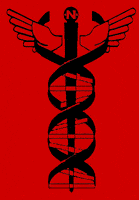

© Copyright 2000-2002, Robert A. Freitas Jr.
All rights reserved.
Development of the concept of nanomedicine has followed two principal paths, termed “wet nanotechnology” in the biological tradition and “dry nanotechnology” in the mechanical tradition. In the biological tradition, it has been suggested that bacteria, macrophages, fibroblasts, or other natural motile cells could be re-engineered to perform a wide variety of useful medical tasks. This concept is sometimes called biorobotics or microbiorobotics.
It is true that mechanical systems may ultimately permit superior speed and control. But an important advantage of biological systems is that many functional components of such systems could be partly or wholly borrowed from existing natural living systems. This could greatly shorten the research and development schedule for this technology, possibly allowing earlier deployment in diagnostic and therapeutic applications in human medicine.